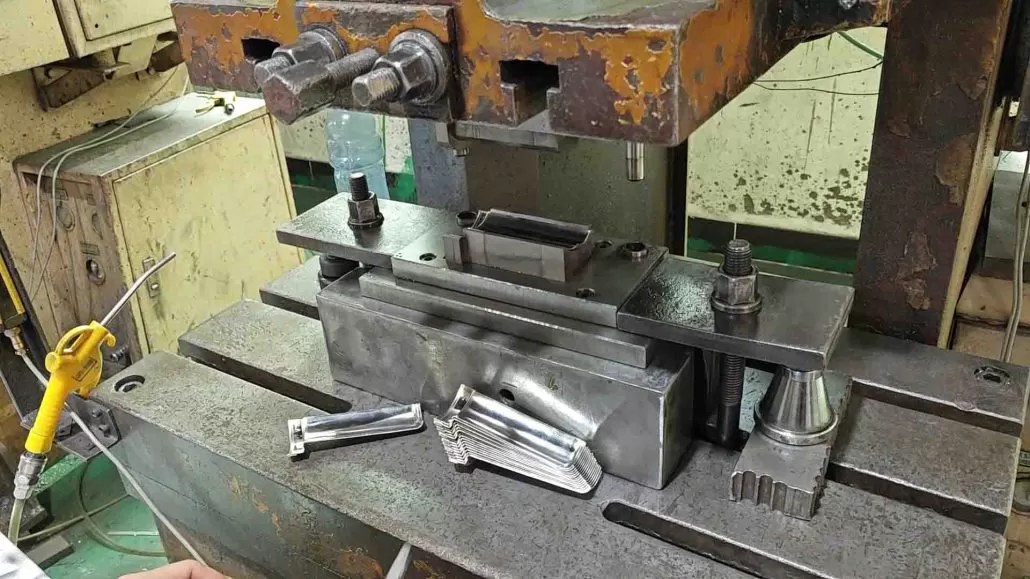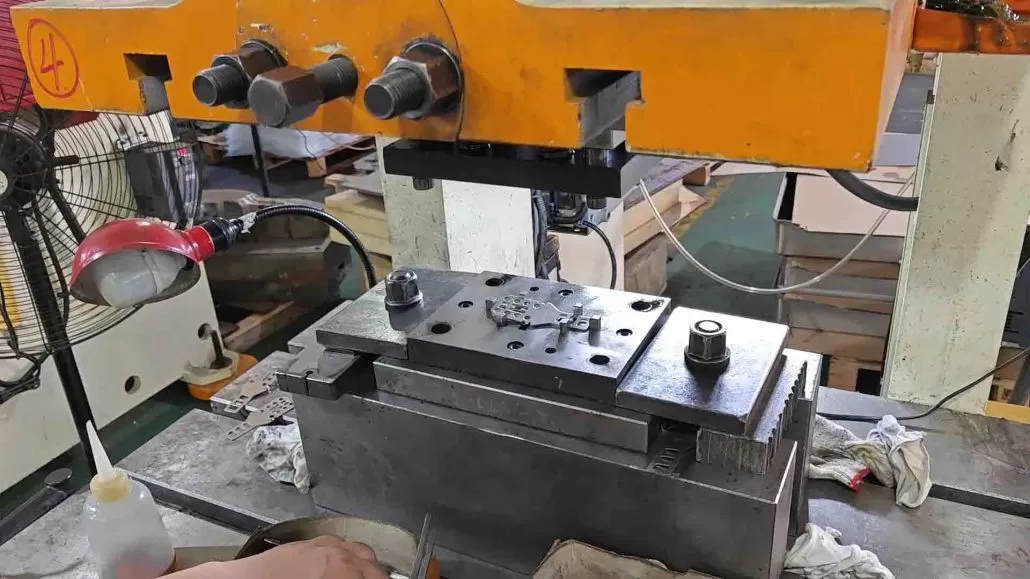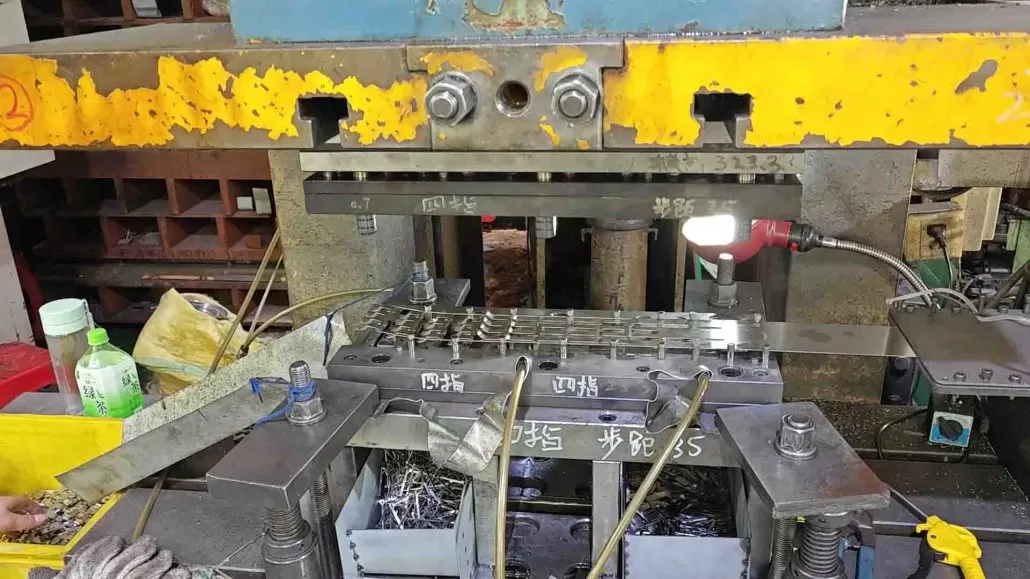If you’re new to the world of manufacturing, it’s easy to get confused by the different processes used to create parts and components. Two popular techniques are forging and stamping, and while these methods may appear similar, there are some significant differences to consider.
In this informative article, we’ll take a closer look at the differences between forging and stamping. By the end, you’ll have a better understanding of which approach is most suitable for your manufacturing needs.

Forging: The Basics
Forging is a manufacturing process where metal is heated and shaped through the application of both compressive and tensile forces. Typically, these forces are exerted using a forging hammer or press, and the end result is a finished product with a higher tensile strength and greater durability than parts made using other methods.
Forging is often preferred over casting since it produces parts with fewer internal defects and a more uniform grain structure. It’s also a versatile process that can be used to create a broad range of parts and components for various applications.
However, forging does have its limitations. It can be a time-consuming process, which can increase the cost of production, depending on the complexity of the part being manufactured. Additionally, the process requires a significant amount of energy, making it less environmentally friendly than some other manufacturing techniques.
Benefits of Forging
At its core, forging is the process of shaping a metal by applying heat and pressure. By doing so, the metal’s grain structure is realigned to result in a stronger, more ductile product. Here are some of the benefits of forging:
Increased Durability
The forging process typically results in a product that is more durable and stronger than other production methods. This is due to the realignment of the grain structure, which results in a product that can handle greater stress and strain. As a result, forged products are often used in critical applications in industries such as aerospace, automotive, and energy.
Cost-Effective Production
Forging is known to be a cost-effective production method as it requires fewer material inputs and less machining. The process produces little waste and results in shorter lead times for production. Additionally, its durability means that replacements and repairs are less frequent, further enhancing its cost-effectiveness.

Enhanced Quality Control
Forging offers enhanced quality control as it produces a consistent product that meets specific requirements. Unlike other production methods that may result in defects such as porosity or cracking, forging produces a product that has been shaped and strengthened, meaning it is less prone to these issues.
Customizable Products
Forging can be used to produce customizable products to meet unique manufacturing requirements. The process can be used to create a range of shapes and sizes that are tailored to specific needs. Additionally, factors such as alloy content, temperature, and pressure can all be controlled to influence the final product properties.
In conclusion, forging is a highly beneficial process that offers numerous advantages for manufacturing industries. From increased durability to enhanced quality control, and cost-effective production to customizable products, the advantages of forging are clear.
Stamping: The Basics
Stamping forming process where metal is formed by applying pressure using a stamping press. The process is often used to create parts with simple shapes and precise dimensions, such as brackets, clips, and electrical contacts. It’s a cost-effective process, making it a popular choice for mass production applications.
One of the key benefits of stamping is its speed. The process is highly automated, with many manufacturers using robotic assistants to help control the press. This reduces the need for manual labor and can improve overall productivity.
However, stamping does have some limitations. The process is best suited for relatively simple parts, and it’s not recommended for producing parts with complex geometries. Additionally, since stamping can produce parts with sharp edges, additional finishing work may be needed to ensure a smooth surface.
Benefits of Stamping
One of the primary benefits of stamping is that it is a highly efficient and cost-effective manufacturing method. Stamping machines can produce large quantities of components at a low cost, making it an excellent choice for mass production. Additionally, stamping can produce very complex shapes in a short amount of time, making it ideal for complex parts.
Stamping is a process of forming metal into various shapes and sizes by using a stamping press. It has many benefits, including:

- Cost-effective manufacturing: Stamping is an affordable way to produce large quantities of metal parts. This is because it is a highly automated process that requires minimal labor.
- Precision and accuracy: The stamping process provides accurate and precise metal parts that meet tight tolerances. This ensures that the parts fit together perfectly, reducing the need for additional machining.
- Versatility: Stamping can be used to create a wide range of metal parts, from simple to complex shapes. This makes it a versatile manufacturing process that can produce parts for a variety of industries.
- Speed: Stamping presses can produce parts quickly and efficiently. This makes it an ideal process for high-volume production runs.
- Durability: Stamped metal parts are strong and durable, making them ideal for use in applications where strength and durability are important.
In conclusion, stamping is an efficient and cost-effective way to produce high-quality metal parts. Its precision, versatility, and durability make it an ideal choice for a wide range of industries.
Forging vs. Stamping: Which is Right for Your Manufacturing Needs?
Both forging and stamping have their advantages and limitations, and the choice between the two will depend on the specific needs of your manufacturing application. Here are some key factors to consider when deciding between the two:
- Part complexity. If your design requires a highly complex part, forging may be the better choice since it can create more intricate forms.
- Part volume. For mass production applications where large volumes of parts are needed, stamping is often the more efficient choice.
- Manufacturing cost. Since forging is typically a more labor-intensive process, it may be more expensive than stamping for some applications.
- Material requirements. Some materials may be more suitable for forging, while others may only be compatible with stamping.
Final Thoughts
In conclusion, forging and stamping are two popular manufacturing techniques that can help create high-quality parts and components. While each method has its advantages and limitations, the choice between the two ultimately depends on your specific manufacturing needs.
If you’re still unsure which approach is best for you, consider consulting a professional who can help evaluate your design requirements and recommend the most suitable process.We can provide custom stamping forming services to better complete your project

